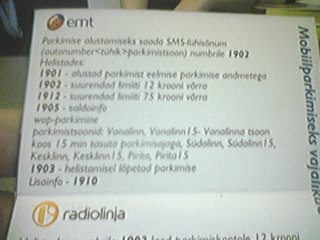
I made a comment on the Hobson and Holtz Report this week over an issue that is really important for everyone who uses the Internet. It covers a major threat to Net Neutrality. It is an issue that should be followed by our institutions.
My comment was this:
I seldom go back to politics these days but feel I now have to return to the fray and this is a personal view.
Net Neutrality affects every person on the planet. Without neutrality the world faces an uncertain future.
At present, anyone with an Internet-connected computer can reach out to a potential audience of billions.
This democratic Web did not just happen. Sir Tim Berners-Lee, who invented the Web in 1989, envisioned a platform on which everyone in the world could communicate on an equal basis. This concept has created untold wealth.
The US House Judiciary Committee on Thursday approved legislation aimed at preventing broadband providers from discriminating against unaffiliated services, content and applications.
The worry is that the vote was 20 to 13. The 13 want to restrict use of the Internet and force companies to pay ISPs extra to ensure consumers can access 'our' content. This high minority is a real danger not just in the USA but for the world it reflects a significant body of opinion in the body politic.
The early vision of the Web is being threatened by telecoms, cable, and other Internet service providers. They want to impose a new system of fees that could create a hierarchy of Web sites.
Major corporate sites may be able to pay the new fees but at a cost to the consumer. People like me and you could pay up or simply be shut out.
Sir Tim, has begun speaking out in favour of "net neutrality," rules requiring that all Web sites remain equal on the Web.
Corporations that stand to make billions if they can push tiered pricing through have put together a lobbying and marketing campaign to try to achieve it.
I am, of course in Sir Tim's corner and have little patience with the chief executive of AT&T, Edward Whitacre. His AT&T and SBC combined organisation returned a pro forma net income of $1.32 billion during the first quarter of 2005 and net income of $1.45 billion for the first quarter of 2006. Nice work.
Yet in his Business Week comments last November,
He is reported to say: How do you think Google or Yahoo or Vonage going to get to customers? Through a broadband pipe. Cable companies have them. We have them. Now what they would like to do is use my pipes free. So there's going to have to be some mechanism for these people who use these pipes to pay for the portion they're using. Why should they be allowed to use my pipes?
His issue is how to enhance his ROI.
His pipes affect every user on the planet.
The companies have invested in infrastructure and they have to maintain it. Returns so far have been handsome. Now they are threatened by advancing technologies. I guess that similar investments by the content providers is for nothing. Over 65% of web pages of corporate web sites provide information for free. I guess they might want to reciprocate. They might want to charge Mr Whiteacre for the public service information they provide to attract people to his pipe. It is a symbiotic relationship now. But it could change.
So, this is about a licence to operate.
First, if AT&T and co. proceed, they will incur the wrath of about a third of the population of the two biggest economies in the world, the USA and EU. I don't mind that. Companies have shot themselves in the foot by ignoring their wider stakeholders before.
Second, these companies can be dissintermediated. They may think that the web, and the Internet for that matter, must use their big pipes. Time to re-think:
They could loose these pipes. Some might ask if they really have a franchise to own them!
They may have to face competition. It is not as though there is not a lot capital and creative engineering out there.
They may have to face The Open Source Movement who mobilised in this way is a mighty adversary.
There are alternative technologies such as ultra broadband switching of high-speed fixed wireless technology which is one of the group of distributed technologies coming on fast.
Third, governments would shake electorally - If G W Bush wants a really awful legacy, he could do no better than be the President who impedes advancement of the Web to Middle America while al Qaeda uses it with impunity.
Fourth, governments will loose much of their present investment in the Internet and would have to find reliable alternatives.
But for me there are three over-riding issues.
The difference between command and control dictatorships and democracies is the difference between shutting the web out and embracing it.
The difference between command and control dictatorships and democratic economies is between stagnation or open, fast-moving and wealth creating entrepreneurs.
Finally, the great protection we have from terrorists and dictators (I tend to think of China and Russia first) is that we can, for all its faults, use the Internet to lever up value and create wealth from intellectual properties because we have unfettered highly educated and creative populations.
Any impediment to open, free and common accessibility means the cold war returns and it will be set against a backdrop of economic recession that feeds on itself.
Round the world people are watching America's thirteen politicians. Their actions affect us all.
Picture: HIFN
















